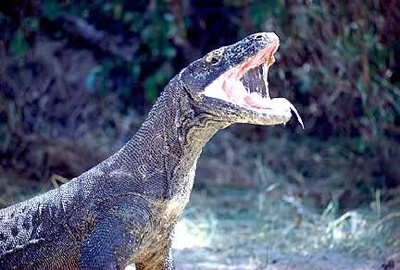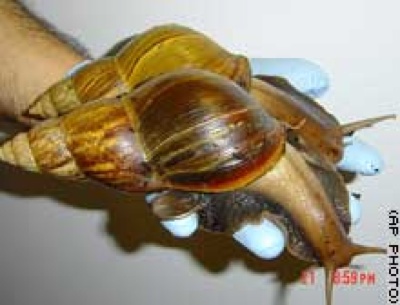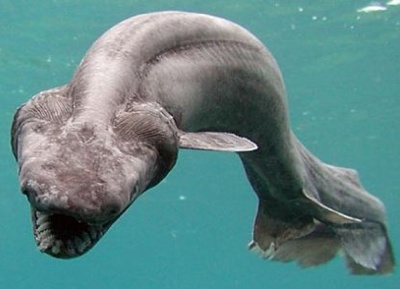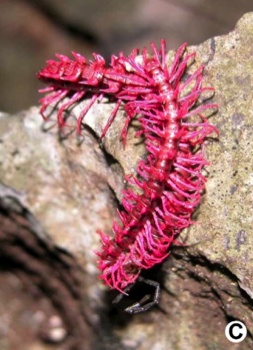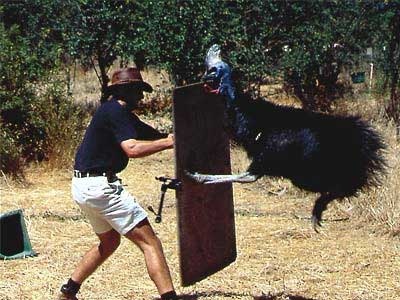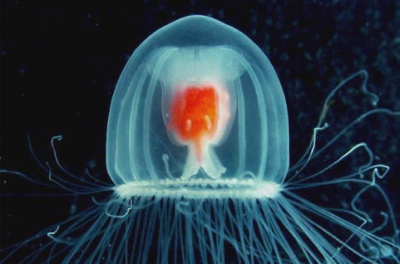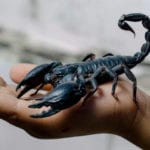 Weird Stuff
Weird Stuff  Weird Stuff
Weird Stuff  Mysteries
Mysteries 10 Tragic Disappearances and Deaths in Joshua Tree National Park
 History
History 10 Ways Childhood Really Sucked in the Old West
 Music
Music 10 Name Origins of Famous Bands from the 1990s
 Religion
Religion 10 Biggest Turnarounds by the Catholic Church
 Weird Stuff
Weird Stuff 10 Unbelievable Times Laws Had Unintended Consequences
 Humans
Humans Ten Historic Women Who Deserve Way More Credit Than They Got
 Movies and TV
Movies and TV 10 Films That Spawned Major Lawsuits
 History
History Ten Times Towns Were Wiped Off the Face of the Earth
 Creepy
Creepy 10 of the Most Disturbingly Haunted Public Houses in the UK
 Weird Stuff
Weird Stuff 10 Niche Subcultures That Are More Popular Than You Might Think
 Mysteries
Mysteries 10 Tragic Disappearances and Deaths in Joshua Tree National Park
 History
History 10 Ways Childhood Really Sucked in the Old West
Who's Behind Listverse?

Jamie Frater
Head Editor
Jamie founded Listverse due to an insatiable desire to share fascinating, obscure, and bizarre facts. He has been a guest speaker on numerous national radio and television stations and is a five time published author.
More About Us Music
Music 10 Name Origins of Famous Bands from the 1990s
 Religion
Religion 10 Biggest Turnarounds by the Catholic Church
 Weird Stuff
Weird Stuff 10 Unbelievable Times Laws Had Unintended Consequences
 Humans
Humans Ten Historic Women Who Deserve Way More Credit Than They Got
 Movies and TV
Movies and TV 10 Films That Spawned Major Lawsuits
 History
History Ten Times Towns Were Wiped Off the Face of the Earth
 Creepy
Creepy 10 of the Most Disturbingly Haunted Public Houses in the UK
Top 10 Badass Living Creatures
We have covered many animal topics on Listverse before, but this is our first list of badass animals. These are not necessarily dangerous or scary creatures – but they do all have one thing in common: they are very unique. The criteria for this list: the animal must be alive (ie, no dinosaurs), and it must be awesome. Without further ado, the ten most badass living creatures.
The komodo dragon is the largest living species of lizard, growing to an average length of 2 to 3 metres (6.6 to 9.8 ft) and weighing around 70 kilograms (150 lb). Their unusual size is attributed to island gigantism, since there are no other carnivorous animals to fill the niche on the islands where they live. Although attacks are very rare, Komodo dragons have been known to attack humans; five people have been killed since 1974. One of the most recent attacks in 2007 was blamed on environmentalists who have protested to have goat sacrifices stopped. Komodo dragons are quite smart and can recognize different humans. They also play with toys like humans and (for the most part) behave tamely when in captivity. The most amazing (and badass) characteristic of the komodo dragon is that the female can lay eggs that hatch without being fertilized by a male (this is called parthenogenesis).
The Giant African snail is so badass and huge that in order to eradicate it, people employ the use of flame throwers. In recent times, the land snails have been kept as pets; however, they are illegal to possess in some countries including the United States. The snails are easy to keep and, when bred in captivity, are unlikely to carry parasites. They are hermaphrodites who produce both eggs and sperm but while they are able to reproduce asexually, they do usually mate with other giant snails. Oh – and these snails love to drink beer because the yeast stimulates their growth.
Flying snakes are mildly venomous, though they are considered harmless because their toxicity is not dangerous to humans. But, while it may be harmless, this snake has an amazing ability which makes it both badass and horrifying. It is able to throw itself from one place to another while slithering in the sky. Upon reaching the end of a tree’s branch, the snake continues moving until its tail dangles from the branch’s end. It then makes a J shape bend, leans forward to select the level of inclination it wishes to travel to control its flight path as well as selecting a desired landing area. It then propels itself by thrusting its body up and away from the tree, sucking in its stomach, flaring out its ribs to turn its body in a “pseudo concave wing”. Flying snakes are able to glide better than flying squirrels and other gliding animals, despite lack of limbs, wings, or any other wing-like projections, gliding through the forest and jungle it inhabits with the length being as great as 100 m.
The frilled shark is a living fossil shark species which looks like a hideous giant eel but is actually a shark. On January 21, 2007, staff at Awashima Marine Park in Shizuoka, southwest of Tokyo, were alerted by fishermen to a ‘strange eel-like fish with razor sharp teeth’. The fish was identified as a pregnant female 1.6 m frilled shark and was captured by park staff who were concerned that the shark appeared to be unhealthy. They took it out of the water and put it into a salt water tank where they filmed it and took pictures of it. The shark died a few hours after capture. The frilled shark is sometimes referred to as a living fossil partially because the species has changed little since pre-historic times.
Millipedes can be quite dangerous creatures, but the shocking pink dragon millipede takes the cake for its nastiness. This millipede shoots cyanide from its mouth. It is a spiny and toxic millipede aptly named for its bright pink color. These adult millipedes are approximately 3 cm long and live in the open on leaf litter. Because of their ability to create cyanide, the millipede smells like almonds (the common odor of cyanide).
Despite their name, the mantis shrimps are neither shrimp nor mantises, but receive their name purely from the physical resemblance to both the praying mantis and the shrimp. These creatures are sometimes referred to as “thumb splitters” because their claws are strong enough to split human appendages. These highly intelligent creatures are often monogamous and they get to know and regularly interact with their neighbors. The mantis shrimp also has the best eyesight in the animal world with 16 different photoreceptor types (compared to four in humans). But – what really makes these creatures badass is their ability to break out of aquariums by smashing the glass with their claws. It has a punch stronger than a .22 calibre pistol.
The Giant Amazonian Centipede can grow to over a foot in length. It is carnivorous, feeding on lizards, frogs, birds, mice, and even bats which it can catch in mid flight! It is also known to prey on tarantulas. The centipede has modified claws called forcipules which curve around its head and can deliver venom into its prey. The extremely potent venom, containing acetylcholine, histamine and serotonin (pain mediators), proteases and a cardiodepressant factor, is toxic to humans and causes severe swelling, chills, fever, and weakness. However, although bites are painful, they are unlikely to be fatal – nevertheless, this is a creature I don’t want to come into contact with. In the clip above you can see the centipede catching a bat in midair.
The 2007 edition of the Guinness World Records lists the cassowary as the world’s most dangerous bird. Normally cassowaries are very shy but when disturbed can lash out dangerously with their powerful legs. During World War II American and Australian troops stationed in New Guinea were warned to steer clear of the birds. They are capable of inflicting fatal injuries to an adult human. Usually, attacks are the result of provocation. Wounded or cornered birds are particularly dangerous. Cassowaries, deftly using their surroundings to conceal their movements, have been known to out-flank organized groups of human predators. Cassowaries are considered to be one of the most dangerous animals to keep in zoos, based on the frequency and severity of injuries incurred by zookeepers. If you think the picture above is scary, check out this image of its feet.
The Humboldt squid is a large, predatory squid found in the waters of the Humboldt Current in the Eastern Pacific Ocean. These squid hunt in packs of up to 1,200 and use their ability to rapidly change color to communicate with each other. Scientists believe that they are highly intelligent and use complex communication. Each tentacle is covered with suckers filled with razor sharp teeth which they use to drag their prey to their beaks. They often approach prey quickly with all ten appendages extended forward in a cone-like shape. Upon reaching striking distance, they will open their eight swimming and grasping arms, and extend two long tentacles covered in sharp ‘teeth,’ grabbing their prey and pulling it back towards a parrot-like beak, which can easily cause dramatic lacerations to human flesh. The whole process takes place in seconds. To make matters worse, these creatures love hunting humans – they do it very frequently and most fisherman in the area know of at least one or two friends who have been eaten by a pack of these monsters.
The immortal jellyfish (turritopsis nutricula) has to be item one on this list because of the fact that it is immortal. That isn’t hyperbole – it really is immortal. After reaching sexual maturity, this jellyfish is able to reverse its aging process and become a polyp again. The ability to reverse the life cycle is probably unique in the animal kingdom, and allows the jellyfish to bypass death, rendering the Turritopsis nutricula biologically immortal. Lab tests showed that 100% of specimens reverted to the polyp stage.
This article is licensed under the GFDL because it contains quotations from Wikipedia.
